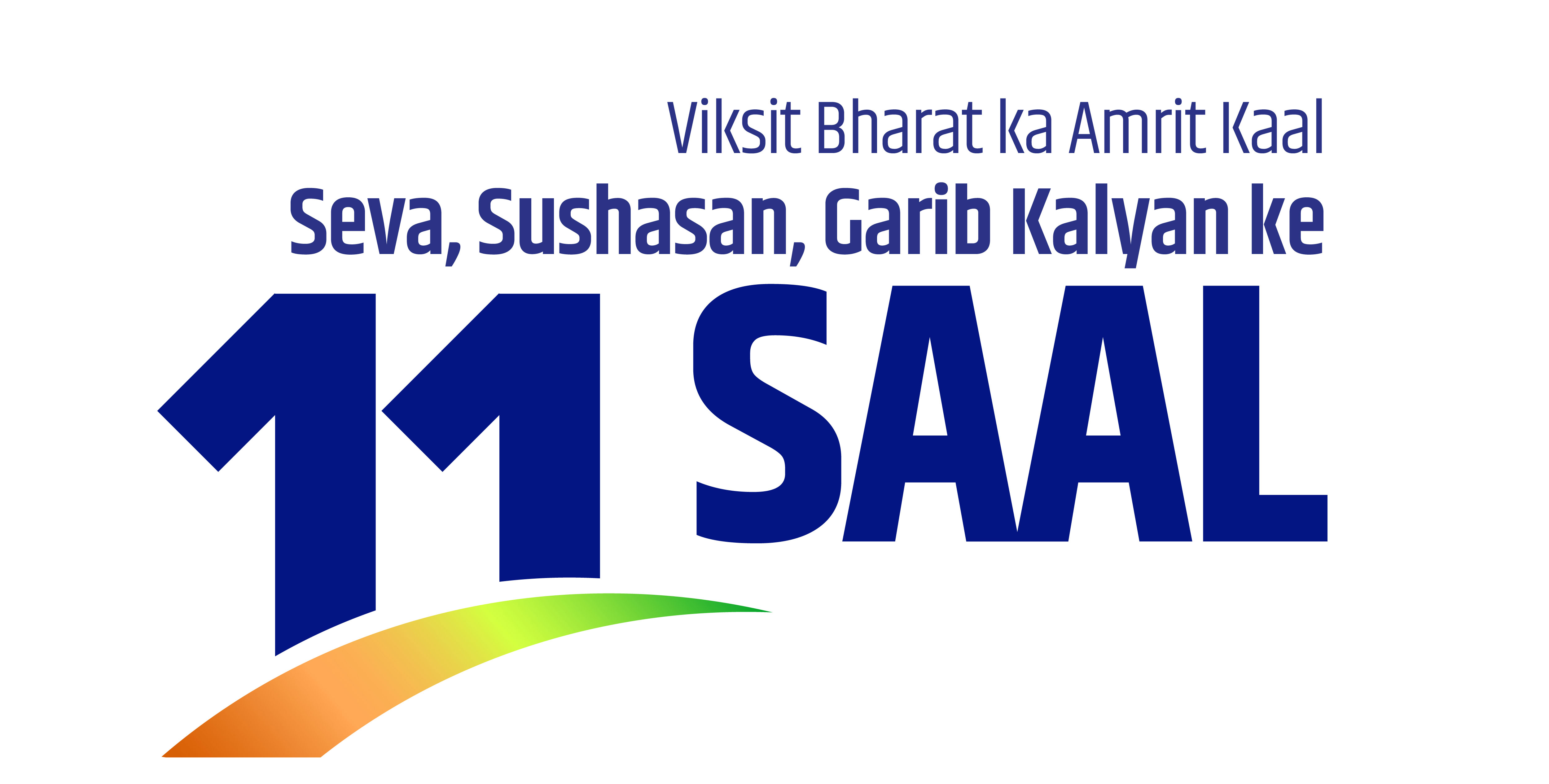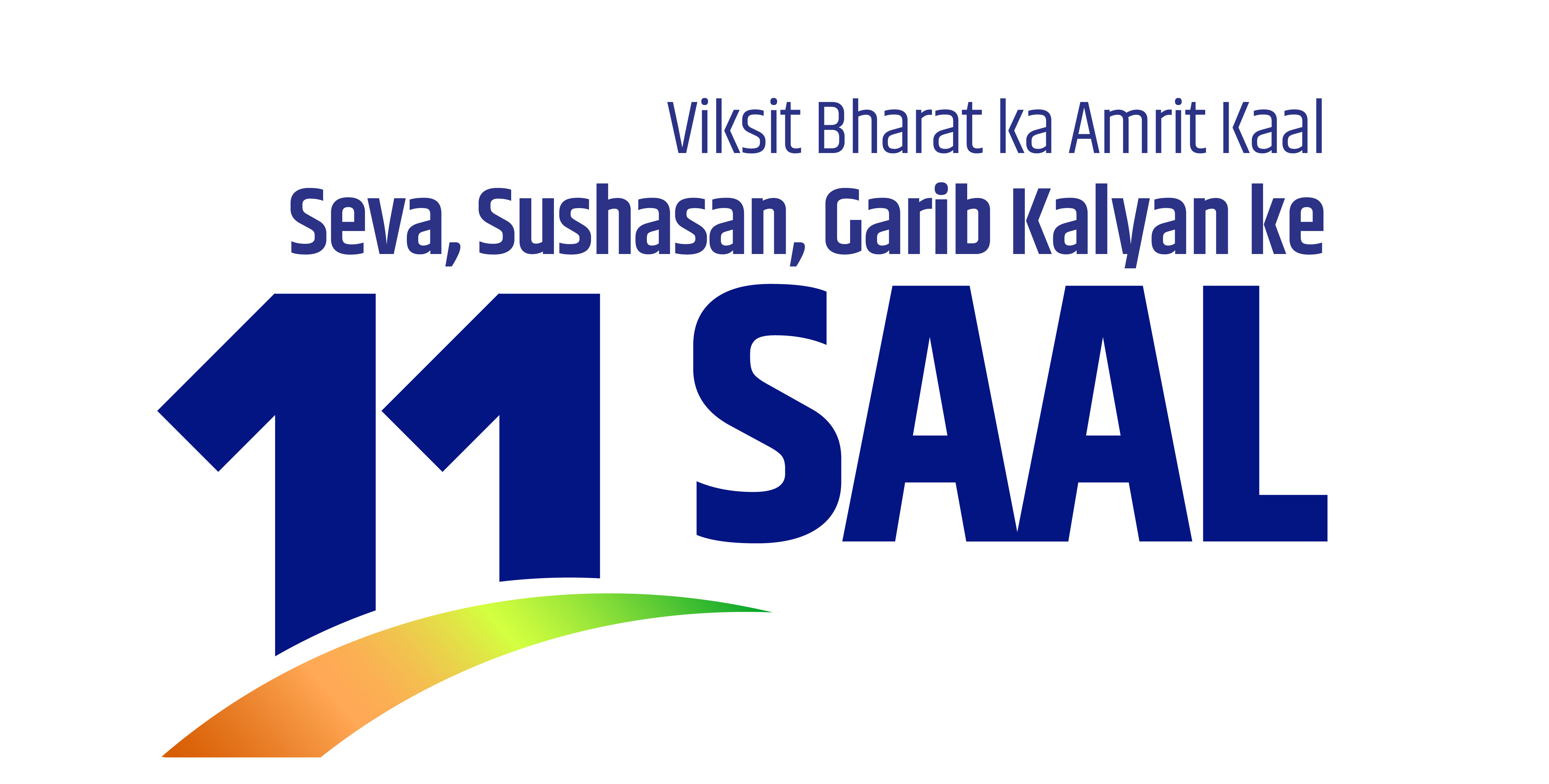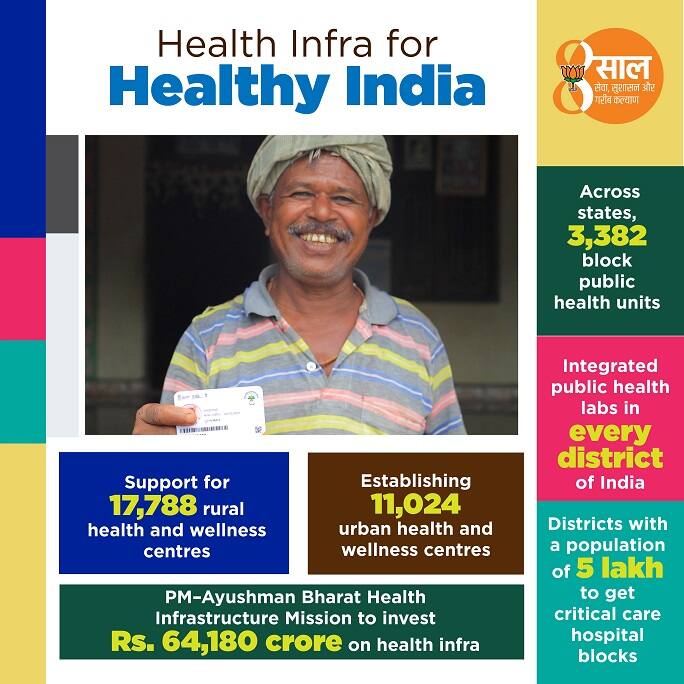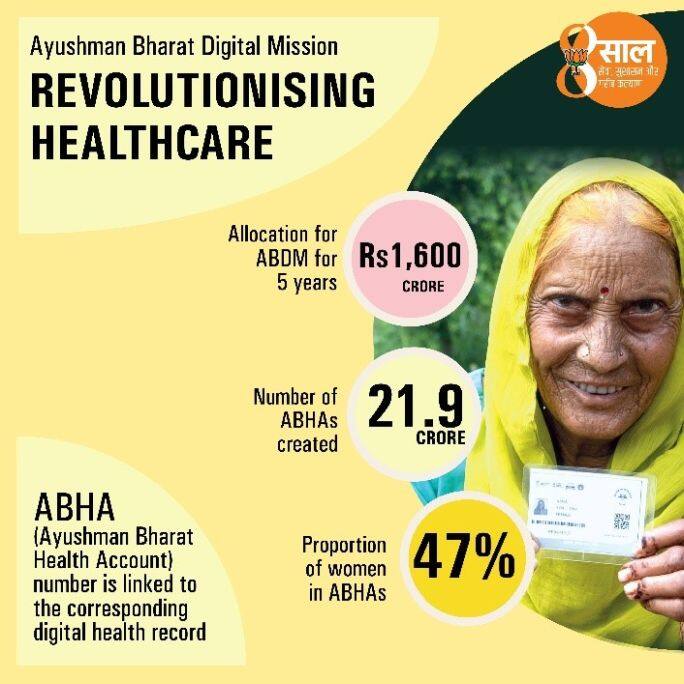

Achievements
- Serving The Poor, Honouring The Marginalised
- Empowering India's Amrit Peedhi
- Ensuring Farmer Welfare
- New momentum for Nari Shakti
- Advancing India's National Security and defence
- Infra at Speed and Scale
- India's Enduring Tech-Prowess
- India: A Global Economic Powerhouse
- Affordable, Accessible Healthcare For All
- Northeast India - A Growth Engine
- Ease of Doing Business
- Vishwamitra : A friend to the world
- Ease of Living For Middle Class
- Conserving Cultural Heritage
- Propelling LiFE Environment and Sustainability
PM-ABHIM and Digital Health Mission – The Gamechangers
2022-05-30 09:56:00
For the government under the leadership of Prime Minister Narendra Modi, the progress and welfare of its citizens, particularly those from economically weak and middle-income sections of society, has always been a top priority.
Accessible and affordable quality healthcare has become a reality for citizens. Earlier, medical expenditure used to be a severe economic burden for low-income households and often led them into debt traps. In 2018, the Modi government gave a permanent relief from this burden to nearly 18 crore households by launching the Ayushman Bharat - Pradhan Mantri Jan Arogya Yojana, the world's largest health insurance programme.
However, PM Modi is not the one to rest and hence has brought in two more important programmes that will build the future of healthcare in India.
PM - Ayushman Bharat Health Infrastructure Mission
Given the push to make healthcare affordable, the Modi government has simultaneously begun expanding the nation’s existing healthcare infrastructure with new hospitals, labs, medical colleges, etc.
The PM Ayushman Bharat Health Infrastructure Mission was launched in October 2021 with aim of increasing health coverage for citizens by building new public health infrastructure like facilities for primary and critical care in urban and rural areas.
The scheme's launch has paved the way for the construction of more modern hospitals and healthcare facilities, which are likely to attract additional foreign investment as well as develop indigenous capabilities. Through the same mission lakhs of jobs for youth also stand to be generated.

Under the PM–Ayushman Bharat Health Infrastructure Mission an investment of Rs. 64,180 crore has been envisioned to establish thousands of HWCs, integrated labs and public health units across high-focus areas in India.
Ayushman Bharat Digital Mission
Since taking office in 2014, Prime Minister Modi has pursued a multi-pronged strategy involving technology to solve health-related concerns. The most recent example has been the development of the Aarogya Setu app which has aided in the monitoring as well as managing of COVID-19 tracing while ensuring steps may be taken to prevent its spread. Similarly, CoWIN platform has simplified the process of providing vaccination doses. This has helped manage vaccination in an orderly fashion in a country of the scale of India. Over the years, the scope of telemedicine has broadened, particularly during the pandemic, when the e-Sanjeevani app was used by crores of people.
When it comes to technology-aided advancement the Ayushman Bharat Digital Mission is the latest addition to this technology-led delivery of healthcare services. This new effort intends to connect thousands of citizens living in remote areas of the country with doctors from major metropolitan hospitals by digitizing health records and information regarding previous and/or ongoing treatments.
On the 15th of August 2020, the Ayushman Bharat Digital Mission-ABDM) was launched as a pilot in six Union Territories: Andaman and Nicobar, Chandigarh, Dadra & Nagar Haveli-Daman & Diu, Ladakh, Lakshadweep, and Puducherry. The national launch of the ABDM was subsequently announced just a year later on September 27, 2021.
The Mission will not only make hospital processes easier, but it will also increase ease of living. Every citizen will now receive a digital health ID, and their health records will be digitally protected. The ABDM is working to promote transparent, interoperable standards in the digital health environment. To provide a smooth digital healthcare experience for all stakeholders–health facilities, patients, and healthcare professionals–ABDM has created building blocks and interoperable APIs.

A total of 21.9 crore Health IDs (ABHA IDs) have been created in the country as of March 28, 2022. As the implementing agency, the National Health Authority (NHA) has undertaken awareness campaigns in healthcare facilities and, as part of outreach operations, has launched various campaigns and hosted webinars with doctors to improve awareness and further boost participation in ABDM.
The government is providing affordable and accessible all-around medical treatment to the most vulnerable residents by developing health infrastructure and leveraging technology in multiple forms to reach citizens irrespective of their geographical location or economic condition.
The Modi government’s multi-dimensional outlook covering preventive and curative healthcare, and connecting them with technology, is leading to an improvement in individual wellness as well as significantly improving health outcomes.
More Articles

Affordable, Accessible Healthcare For All
भारत के आयुष को वैश्विक आयाम
June 6 , 2025
भारत लंबे समय से समग्र चिकित्सा (होलिस्टिक हेल्थकेयर) का एक प्रमुख केंद्र रहा है, जहाँ आयुर्वेद और योग जैसे पारंपरिक चिकित्सा व्यवस्थाएं उसकी प्राचीन सभ्यता और गहरी ज्ञान-परंपरा में गहराई से जुड़े हुए हैं। फिर भी, दशकों तक इस अमूल्य ज्ञान को पहले की सरकारों द्वारा नजरअंदाज किया गया, और इसे मूल्यवान की बजाय पुराना और अप्रचलित मान लिया गया। लेकिन प्रधानमंत्री नरेंद्र मोदी के नेतृत्व में यह स्थिति पूरी तरह बदल गई। उन्होंने भारत की पारंपरिक चिकित्सा विरासत को गर्व और उद्देश्य के साथ पुनर्जीवित किया

Affordable, Accessible Healthcare For All
सस्ती दवाएं, समय पर इलाज: खत्म होता कैंसर का डर
June 6 , 2025
यह कहानी 2015 की है। मुंबई जैसे बड़े शहर में, जहाँ लोग अपने सपनों को पूरा करने आते हैं, वहाँ एक 15 साल का कमजोर सा लड़का लिफ्ट का बटन दबा रहा था। उस उम्र में उसे स्कूल जाना चाहिए था, दोस्तों के साथ खेलना चाहिए था। उसका नाम अक्षय था। विदर्भ के खुले मैदानों में खेलने की उसकी उम्र थी, लेकिन हालात ने उसे काम करने पर मजबूर कर दिया। उसके बड़े भाई को कैंसर हो गया था और परिवार के पास इलाज के पैसे नहीं थे। बीमारी का दर्द एक तरफ था, और पैसे की कमी की तकलीफ दूसरी तरफ। सोचिए, कोई अपने परिवार को बचाने के लि